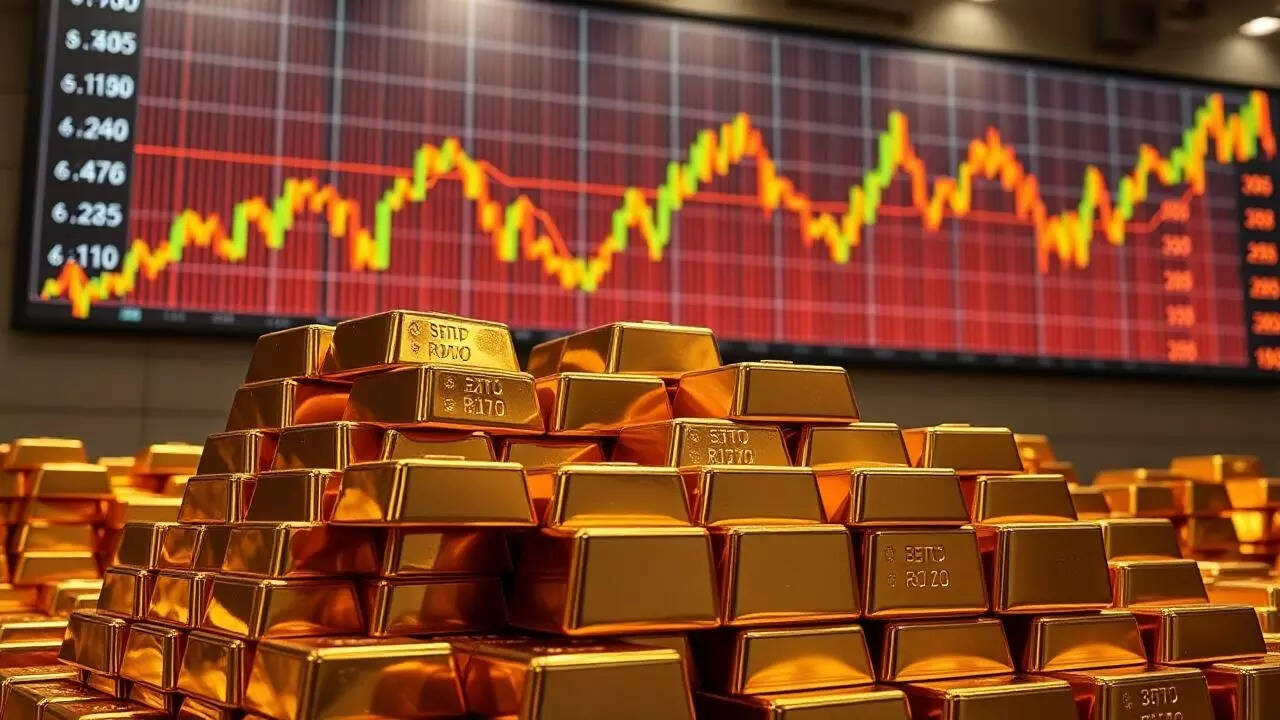Gold prices remain range-bound after hitting record highs, influenced by ongoing Trump’s trade war tensions. Silver may outperform gold in the long term.
Decoding Gold’s Future: Navigating a World of Tariffs and Uncertainty
Predicting the future is a fool’s errand, especially when it comes to something as volatile as the gold market. Yet, understanding the forces at play can provide valuable insights into potential price movements. Right now, the shimmering allure of gold is caught in a fascinating tug-of-war between geopolitical anxieties, economic indicators, and the ever-present influence of figures like Donald Trump.
The question on everyone’s mind: where is the gold rate headed in the near future? The answer, as always, is complex.
The Trump Tariff Tango: How Trade Policies Sway Gold
One significant factor casting a shadow (or perhaps a golden glow?) is the potential for renewed trade tariffs. The prospect of Donald Trump returning to the White House and enacting protectionist trade policies sends ripples throughout the global economy. Trade wars create uncertainty, and uncertainty is gold’s best friend.
Why? Because gold is often seen as a safe haven asset. When investors lose faith in traditional investments like stocks and bonds due to economic or political turmoil, they flock to the perceived security of gold, driving up its price. Trump’s tariff policies, designed to protect domestic industries, could inadvertently trigger retaliatory measures from other countries, leading to a global economic slowdown. This, in turn, could bolster gold’s safe-haven appeal.
The impact isn’t limited to hypothetical scenarios. Past experience offers a clear illustration. During Trump’s previous term, periods of heightened trade tensions directly correlated with spikes in gold prices. Investors, wary of the potential damage to the global economy, sought refuge in the precious metal.
MCX Gold Futures: A Glimpse into Domestic Sentiment
While global events heavily influence gold prices, it’s crucial to understand the nuances of the domestic market. In India, the Multi Commodity Exchange (MCX) gold futures contracts serve as a barometer of local sentiment. These futures contracts reflect the expectations of Indian investors regarding the future price of gold.

Analyzing trends in MCX gold futures can offer valuable clues. For example, a surge in trading volume accompanied by rising prices suggests strong bullish sentiment, indicating that investors anticipate further price increases. Conversely, declining volume and falling prices point to bearish sentiment. Paying close attention to these indicators can help navigate the complexities of the Indian gold market. You can also compare the trends and indicators from the MCX Gold Futures with other popular commodities like Silver. This may give a better understanding of investment opportunities in the long run.
Silver’s Shadow: Understanding the Sister Metal
While gold often steals the spotlight, it’s important to consider the role of silver. Silver, often referred to as gold’s sister metal, shares some of gold’s safe-haven characteristics. However, silver also has significant industrial applications, making its price more sensitive to economic growth.
The gold-silver ratio, which represents the amount of silver needed to buy one ounce of gold, is a useful indicator. A rising ratio suggests that gold is outperforming silver, often signaling economic uncertainty. Conversely, a falling ratio may indicate a more optimistic economic outlook. Analyzing the interplay between gold and silver can provide a more comprehensive understanding of the precious metals market.
Beyond Geopolitics: Other Factors at Play
Of course, geopolitical tensions and trade policies aren’t the only factors influencing gold prices. Interest rates, inflation, and currency fluctuations also play a crucial role. Higher interest rates tend to dampen gold’s appeal, as they increase the opportunity cost of holding a non-yielding asset. Inflation, on the other hand, can boost gold prices as investors seek to preserve their purchasing power. Currency movements, particularly the strength of the US dollar, can also impact gold prices, as gold is typically priced in dollars.
Navigating the Golden Maze: Key Takeaways
Ultimately, predicting the precise future price of gold is impossible. The market is simply too complex and influenced by too many variables. However, by understanding the key drivers – geopolitical risks, trade policies, MCX gold futures trends, and the relationship with silver – investors can make more informed decisions. Keep a close eye on these factors, and you’ll be better equipped to navigate the golden maze and potentially reap the rewards. This may be the most crucial aspect of making any kind of investments.
Looking Ahead: A Continuously Evolving Landscape
The gold market is a dynamic and ever-changing landscape. As global economic and political forces continue to evolve, so too will the factors influencing gold prices. Staying informed, adapting to new information, and understanding the interplay of various market drivers are essential for anyone looking to invest in or simply understand the allure of gold.







